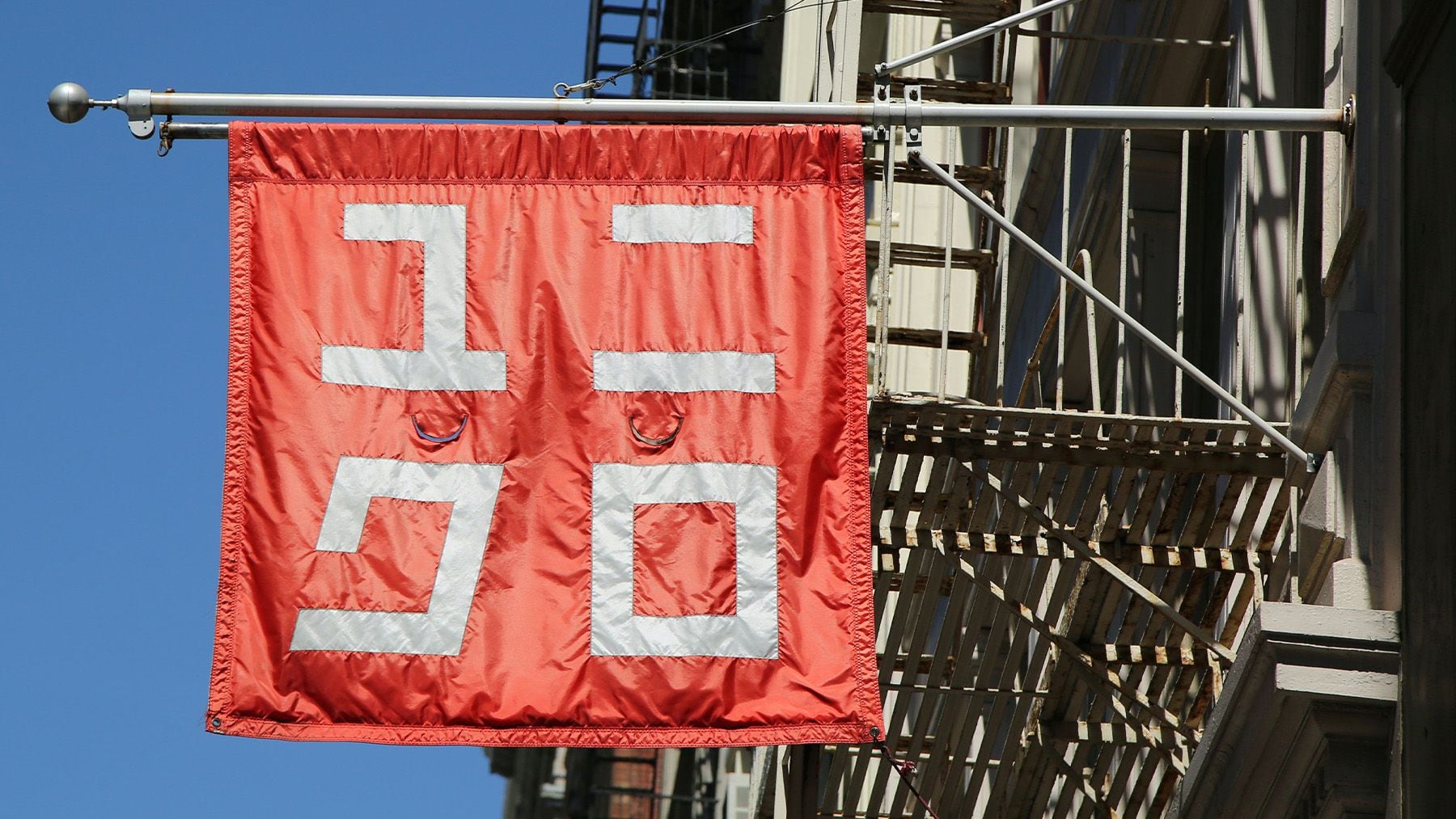Uniqlo’s Quest to Conquer the US, One Cashmere Sweater at a Time
The biggest challenge to Japanese fashion giant Uniqlo’s plan to take on the US? Getting more Americans to know who they are.
The apparel maker, known for its affordable cashmere sweaters and solid basics, wants to go big in one of the world’s toughest consumer markets. Although Uniqlo is a fixture in shopping streets of New York and other coastal cities, parent Fast Retailing Co. is giving its flagship clothing brand a hefty marketing budget to ensure the brand can reach the same level of awareness in Iowa and Texas as it enjoys in Japan, Asia and parts of Europe.
Differing tastes in clothing, depending on local markets, makes expansion especially tough, according to Daisuke Tsukagoshi, Uniqlo’s chief executive officer for the US and Canada.
“We are starting from people asking what Uniqlo is,” Tsukagoshi, 44, said in an interview at Uniqlo’s warehouse-sized office building on a reclaimed island in the middle of Tokyo Bay. “Marketing is absolutely necessary, and without it there’ll be no growth.”
It’s a formidable task. The clothing company only recently became profitable in North America and has 61 stores there right now, with less than 1 percent of the $291 billion retail clothing market. Tsukagoshi’s mandate is to more than triple that in four years — to 200 stores — an achievement that could put the US ahead of Europe, where it currently operates 112 outlets.
“The goal is quite challenging,” said Tsukagoshi, who speaks with precision about numbers and dates, and said he likes to meet his staff and look them in the eye to gauge their commitment to the mission. Although it “won’t be easy” to achieve within the time frame, the Uniqlo CEO said “reporting a profit was a step forward, helped gain trust in customers and raised morale.”
If successful, Fast Retailing is betting that Uniqlo North America will deliver annual revenue of ¥300 billion ($2.3 billion) and an operating margin of 20 percent by 2027. That compares with yearly sales of ¥810 billion in Japan, roughly a third of total revenue.
Known for its simple but fashionable takes on everything from office wear to pajamas, Uniqlo has become a marketing and apparel phenomenon in its home market of Japan. It’s been able to replicate some of that success in other parts of Asia, as well as in Europe, but the North American market has been a long-sought goal for Fast Retailing’s founder and CEO Tadashi Yanai, Japan’s richest man, according to the Bloomberg Billionaires Index.
Even though the first Uniqlo store opened in New Jersey in 2005, the brand has struggled to reach the same scale of success seen in mainland China, where Tsukagoshi was the brand’s chief operating officer from 2017 to 2020. The country is one of Fast Retailing’s key markets, with around 900 stores generating ¥538.5 billion in annual sales.
During the pandemic, many shoppers moved away from cities to seek more space to avoid infections, which impacted store locations and required the company to think more strategically about online sales. Tastes also shifted toward comfortable clothing as people spent more time at home.
It was at the height of the global Covid-19 outbreak that Yanai tapped Tsukagoshi to overhaul Uniqlo in North America. It was his 18th relocation since joining Fast Retailing in 2002. He shut unprofitable stores, reduced inventories and took control of human resources.
“We promoted those who showed leadership,” Tsukagoshi said. “I told them: ‘We are on the edge, this is our last chance — scratch everything from the past and find ways to change or leave the company.’”
Uniqlo plans to open 10 stores during the current fiscal year in North America, which ends in August, followed by 20 to 30 each year in order to reach Yanai’s goal of 200 stores. They’re going up against entrenched global clothing brands already in the market. By comparison, Hennes & Mauritz AB has 740 H&M stores in the Americas, while Gap Inc. counts more than 2,000.
One key risk is to avoid opening stores too fast, according to Takahiro Kazahaya, an analyst at Credit Suisse Securities (Japan) Ltd. He cited Uniqlo’s experience in 2001, when it entered the UK market and opened 21 stores, only to shutter 16 of them two years later. Avoiding a rapid expansion should let them “proceed smoothly,” Kazahaya said.
At the same time, North American consumers are facing rising energy and food costs, forcing them to cut back on discretionary spending. Retail sales are projected to contract by 0.1 percent in the US this year when accounting for inflation, according to S&P Global Market Intelligence economists. Hennes & Mauritz said in January that severe increases in energy, freight and garment prices almost wiped out profits in its latest quarter.
Given that public awareness of the Uniqlo brand is so low in the US, Fast Retailing will have to keep spending on marketing to communicate the value of its clothing, and avoid the temptation to reduce prices in order to attract customers.
“Up until now we used to discount a lot like other retailers, but we stopped doing that,” Tsukagoshi said. “Our concept of clothes made for all is an idea can be universally accepted.”
By Grace Huang and Kanoko Matsuyama
Learn more:
Uniqlo Owner Sees Profit Topping Projections on Sales Climb
Uniqlo owner Fast Retailing Co. issued an outlook for profit and sales ahead of analysts’ projections for the current fiscal year, thanks to better demand for its cheap casual apparel in Japan and a weaker yen bolstering profits brought back home from overseas.

